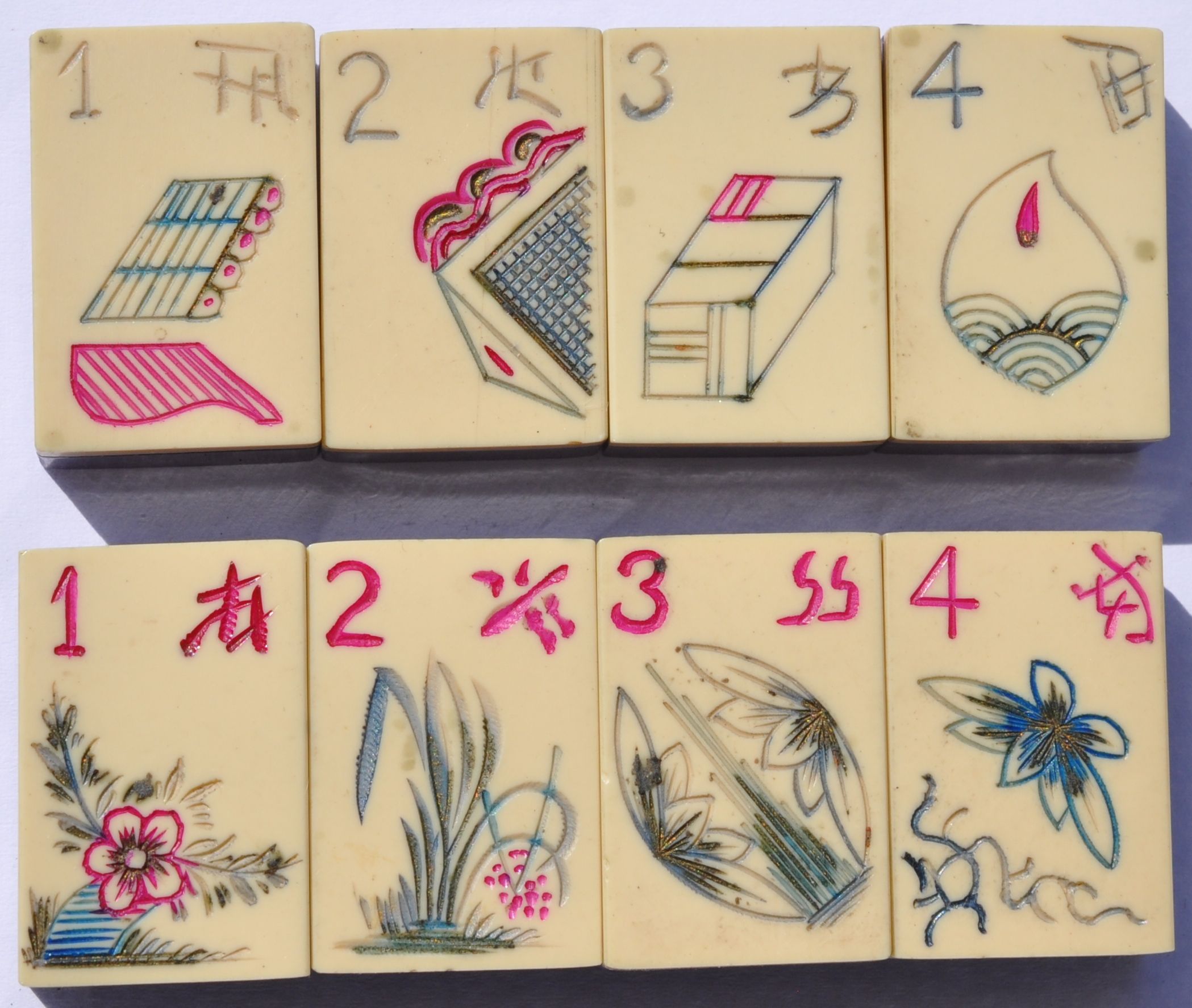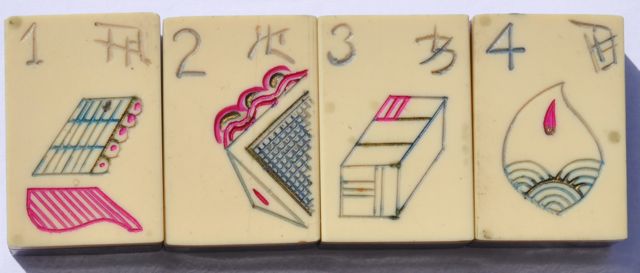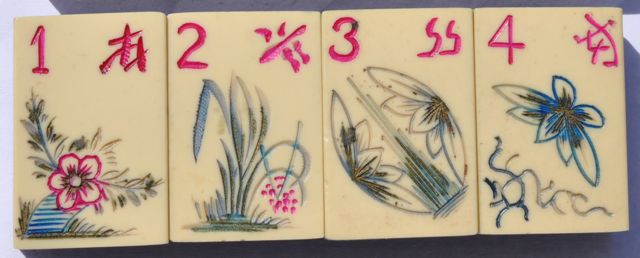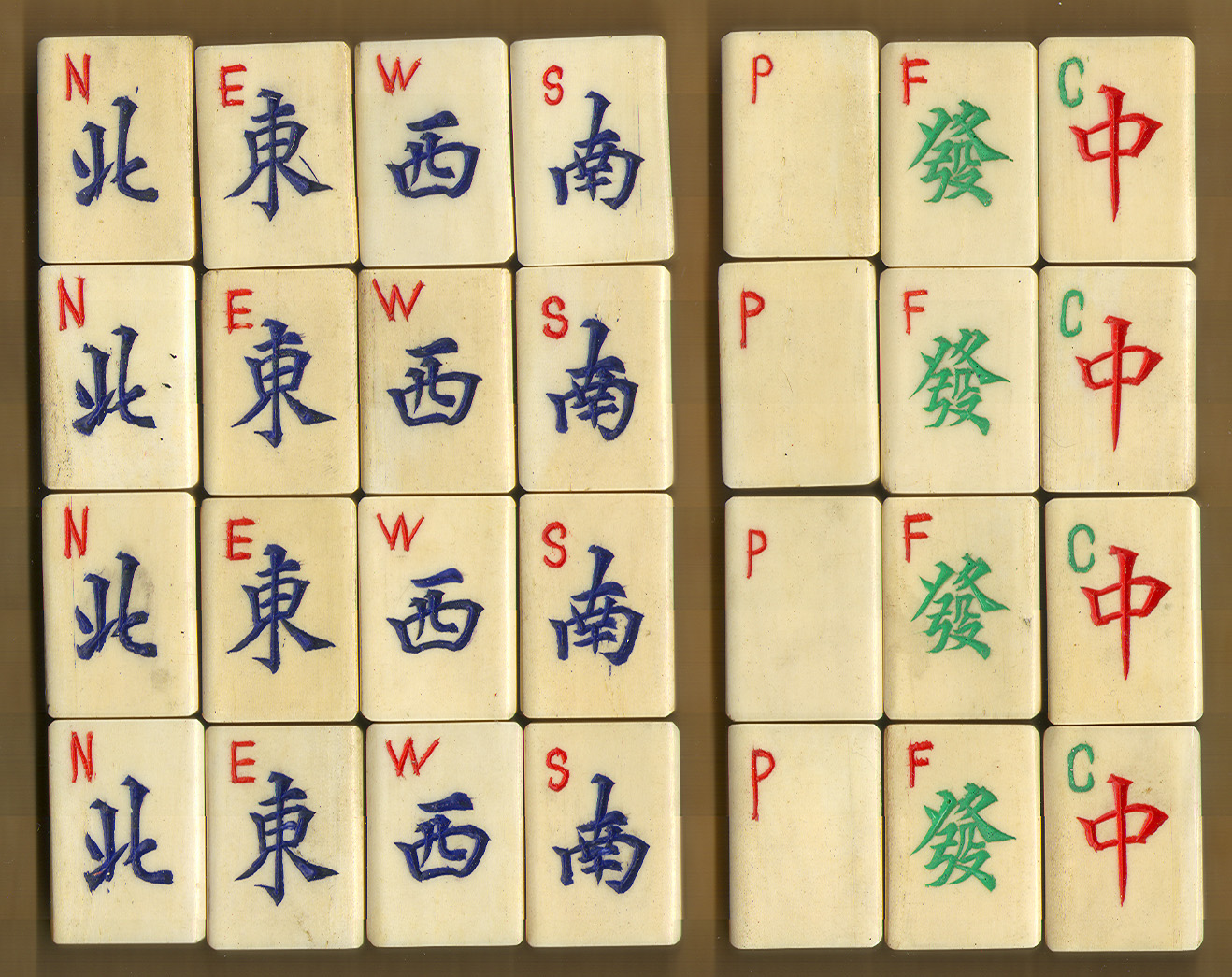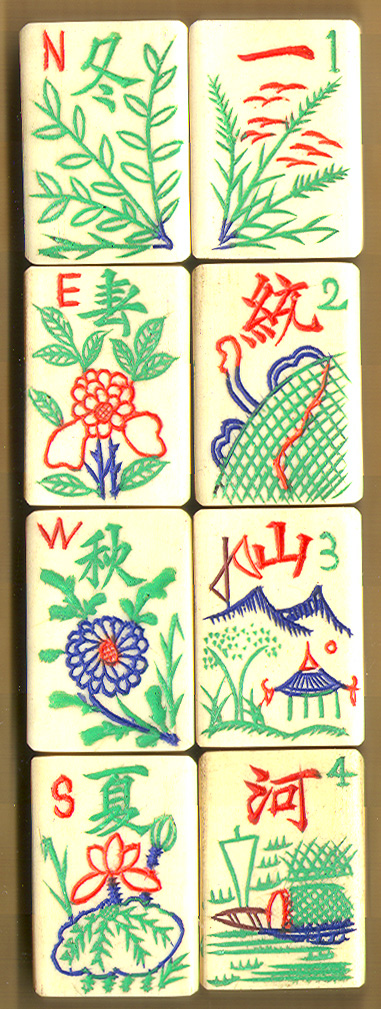This post features the hand carved Dragons and Flowers for the laminate mahjong set discussed on March 9 and 10.
The unusual writing style we noted on the Winds continues here on the Green Dragon which is deeply carved. The color palette continues with the gray Green Dragon and the pink Red Dragon.
You can easily see the varied depth of the carving, most apparent on the tiles on the top row with gold paint, especially on tile 2. These images are also highly stylized. The top row features the Arts of the Scholar, and the bottom flowers.
Ray Heaton has once again provided the translations. The characters on these tiles are stylized as well, making for a translation challenge.
"We need to use a bit of knowledge of the likely characters helped by two or three which are reasonably straight forward.
The top row are the arts of the scholar, and are versions of the simplified characters, 棋琴书画.
Qi Qin Shu Hua; chess, qin (the zither), calligraphy and painting.
The last two characters are the give away for me and are close enough to 书画 to allow all four characters to reveal themselves.
Although first two are "educated guesses", you can just about see the first character as 棋, (especially the second element of this character, 其, excluding the radical).
Bottom row are 梅兰竹菊, Mei Lan Zhu Ju; plum, orchid, bamboo, chrysanthemum. The second tile uses a character close to the simplified character for orchid, 兰. I don't see what else tile three could be other than 竹, and tile four is reasonably close to the expected look of the character."
For those of you who have an ipad, ipod, iphone or android device there is an app which can be helpful with the straightforward translations of Chinese characters. It is Pleco, and it allows you to write on the screen the symbol you see, and it will translate it for you. It often seems easier, though, to guess at the word on the tile and get the Chinese character for it, and see if that character bears any resemblance to what appears on the tile.


